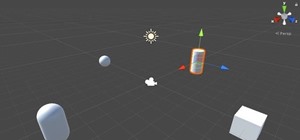Though Microsoft has had trouble keeping up with the demand for HoloLens 2, the company has been able to supply modified headsets to the US Army.
Now, newly revealed images from the US Army show exactly how the HoloLens 2 is being used during training exercises as the military puts the headset through its paces.
The impetus for the weaponized headset's most recent public appearance comes courtesy of a live demonstration of an augmented reality training program, which places virtual enemy combatants in an empty room as soldiers conduct tactical exercises.
Back in 2018, Microsoft beat out Magic Leap for a $488 million contract to supply augmented reality headsets to the US Army. After Microsoft unveiled the HoloLens 2 in Feb. 2019, the first images of the modified HoloLens 2, a key component of the Integrated Virtual Augmentation System (IVAS), surfaced from a soldier checkpoint held in April 2019 to test the devices.

Since then, the US Army conducted a second soldier checkpoint in late 2019, with a third to follow this summer and fourth to be held in 2021. With each month-long checkpoint, Microsoft embeds its HoloLens team on-site to gather feedback from soldiers and apply changes as the US Army increases the number of soldiers involved in testing.
In addition to new images, a report by Military Times unveils some new details about how the US Army plans to deploy the HoloLens 2.

In terms of the IVAS, the HoloLens 2 works in conjunction with a tactical assault kit, which includes a Samsung smartphone running the Android operating system, a radio, and a battery, which provides eight hours of operation for the entire IVAS system.
The current configuration, including after-market sensors like the Flir thermal sensor, weighs in at 2.5 pounds. The US Army expects the next iteration to weigh in at an even 2 pounds, with the final product scheduled for delivery by September 2021.

In addition, over the last two testing periods, developers have improved upon the user interface, which soldiers initially considered too cluttered.
While the current concentration of the modified HoloLens 2 testing has been in training situations, the US Army's ultimate aim is to deploy the headsets on the battlefield in real situations.

"When terms like 'situational awareness' get thrown around time after time, it's easy to lose sight of what it really means," said MAJ Brad Winn, lead action officer for IVAS, in a blog post referencing the second soldier checkpoint. "In this case, one of the greatest capabilities of IVAS is Aided Target Recognition, a feature that gives users the ability to quickly identify anything or anyone in sight, which means they can tell the difference between a threat and a civilian non-combatant."
As Microsoft delivers on its military contract, the feedback its teams receive from soldiers will ultimately pay off in the next version of the headset, from lighter hardware to a more user-friendly UI.
Just updated your iPhone? You'll find new features for Podcasts, News, Books, and TV, as well as important security improvements and fresh wallpapers. Find out what's new and changed on your iPhone with the iOS 17.5 update.























Be the First to Comment
Share Your Thoughts